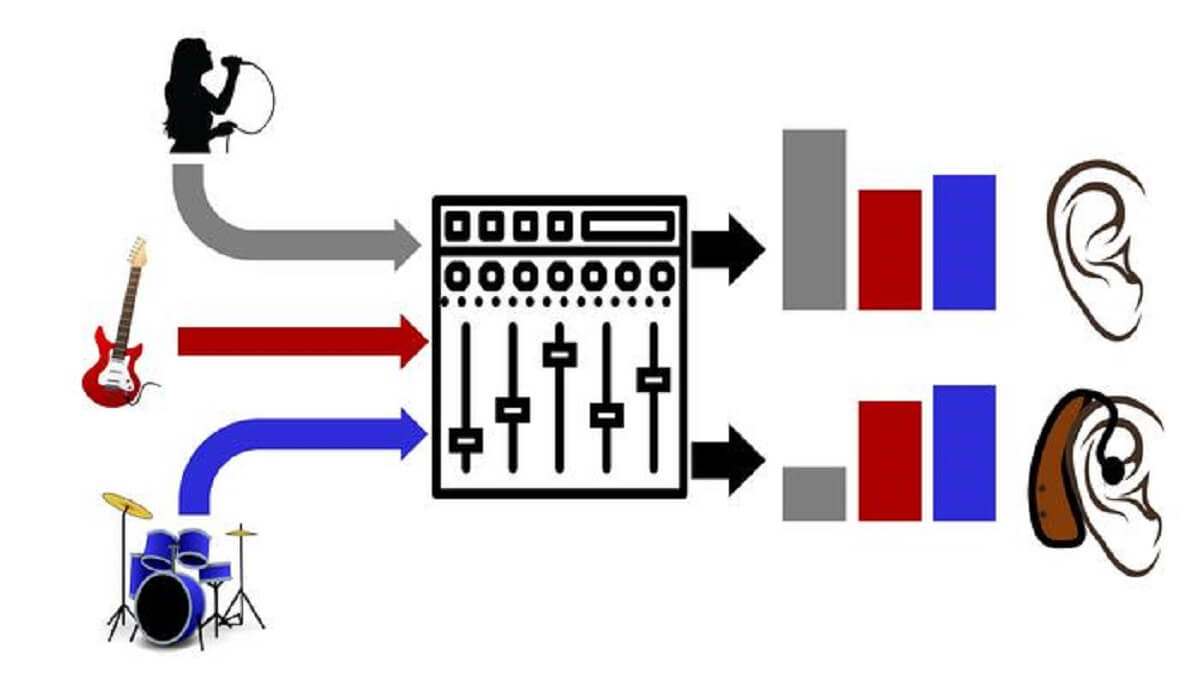OLDENBURG, Germany — Music enthusiasts with hearing difficulties could enhance their listening experience with mixes specifically designed for them. Prior studies have indicated that those with partial hearing loss often find it challenging to discern vocals and specific frequencies in contemporary music. However, this new research highlights how an enormous global population with some degree of hearing impairment could benefit from custom remixes of popular tracks.
While treatments like hearing aids and cochlear implants offer some relief for hearing loss, they don’t fully replicate the nuances of natural hearing. This limitation particularly impacts the auditory experiences of speech and music.
Researchers from the University of Oldenburg in Germany delved into how hearing loss affects individuals’ enjoyment of various musical mixes. They detailed how modern genres like pop or rock are composed of multiple individual tracks – vocals, instruments, and synthesized sounds. These tracks, recorded separately, are later blended to produce the final song. During this mixing process, the volume of certain tracks may be adjusted, or specific high or low frequencies might be amplified to cater to the preferences of general audiences.

“Mixing is tailored to suit the needs of normal-hearing listeners. We wanted to explore whether there are actually differences in mixing preferences between normal-hearing and hard-of-hearing listeners,” says Dr. Kai Siedenburg, the study’s author, in a media release.
The researchers played various musical mixes for both groups. They discovered that individuals with hearing impairment favored louder vocals, elevated frequencies, and generally clearer mixes with fewer overlapping frequencies.
“Generally, hard-of-hearing listeners have reduced frequency selectivity and impaired level perception,” says Aravindan Benjamin, a Ph.D. candidate and co-author of the study. “They tend to prefer louder levels of lead vocals compared to normal listeners.”
The same team, in earlier research, deduced that a shift in music toward softer vocals and amplified instrumentals began around 1975 and has persisted. This trend possibly makes today’s music less accommodating for the hearing-impaired.
The researchers acknowledge that hearing aids can address some of these issues. However, not everyone has access to these devices, and they come with their unique challenges. Some individuals might find it more satisfactory to modify their music using software rather than defaulting to the adjustments offered by hearing aids.
“Getting good headphones for example, and then playing around with the equalization might be a better approach than trying to squeeze everything through the hardware of the hearing aid,” advises Dr. Siedenburg.
Siedenburg emphasizes that the most significant improvements need to originate from music production. Sound engineers, with direct access to individual tracks, can substantially enhance accessibility for numerous listeners.
“One approach could be to offer a couple of different mixes, one for the general public and one for people who are moderately hard of hearing. Certain adjustments to the mix might help to cater to the needs of this group of people in a better way,” concludes Dr. Siedenburg.
The findings are published in The Journal of the Acoustical Society of America.
South West News Service writer Stephen Beech contributed to this report.

